Navigation
Install the app
How to install the app on iOS
Follow along with the video below to see how to install our site as a web app on your home screen.

Note: This feature currently requires accessing the site using the built-in Safari browser.
More options
You are using an out of date browser. It may not display this or other websites correctly.
You should upgrade or use an alternative browser.
You should upgrade or use an alternative browser.
- Joined
- Oct 18, 2011
- Messages
- 6,070
- Reaction score
- 2,420
- Location
- Glasgow, Scotland
- Website
- www.petecrawford.co.uk
- Can others edit my Photos
- Photos OK to edit
Are you waiting for the flash to recycle? Usually you need to wait a few seconds after the flash has fired and when you take your next shot for it to re-charge. You can cut it down a bit by bumping your ISO up and lowering your flash output accordingly which should give you a faster recycle time.
- Joined
- Aug 15, 2013
- Messages
- 13,695
- Reaction score
- 3,369
- Location
- SE Michigan
- Can others edit my Photos
- Photos OK to edit
As mentioned already
You seem to have reliable equipment
The speedlight needs to recharge the flashtube. If the flash is at full power you'll probably hear it charge back up. If you are shooting many shots then you wouldn't be giving the speedlight enough time to recharge.
To improve recycle time you want to decrease the power output. As mentioned, to do that you raise your ISO (and/or aperture/shutter adjustments) to adjust the speedlight to need less recharge, and thus less time to recycle.
If we knew much more about exactly how you are using it ... how many shots you are taking, how quickly, the type of batteries (and if new or not), camera settings (ISO, aperture, shutter). we'd have much more information to work off of to help you adjust the way your use your camera/speedlight in certain situations.
You seem to have reliable equipment
The speedlight needs to recharge the flashtube. If the flash is at full power you'll probably hear it charge back up. If you are shooting many shots then you wouldn't be giving the speedlight enough time to recharge.
To improve recycle time you want to decrease the power output. As mentioned, to do that you raise your ISO (and/or aperture/shutter adjustments) to adjust the speedlight to need less recharge, and thus less time to recycle.
If we knew much more about exactly how you are using it ... how many shots you are taking, how quickly, the type of batteries (and if new or not), camera settings (ISO, aperture, shutter). we'd have much more information to work off of to help you adjust the way your use your camera/speedlight in certain situations.
Designer
Been spending a lot of time on here!
- Joined
- Apr 13, 2012
- Messages
- 18,505
- Reaction score
- 4,853
- Location
- Iowa
- Can others edit my Photos
- Photos OK to edit
Please provide more information. Some of the questions that we now have to ask:Help please!
flash not recycling (already asked)
what method are you using to fire the flash? (RF or cable?)
is there a PC cable involved?
what program in the camera? (A P M, etc)
is flash malfunctioning? (getting old for instance)
what flash? (is it a cheap import knock-off?)
Didereaux
Been spending a lot of time on here!
- Joined
- Oct 29, 2013
- Messages
- 2,372
- Reaction score
- 1,587
- Location
- swamps of texas
- Website
- tinyurl.com
- Can others edit my Photos
- Photos OK to edit
....are you shooting remotely? By radio or optics? If radio and other photogs are doing the same then probably someone is using the same channel as you....change channels. Just to little info to give you any meaningful answers.
Braineack
Been spending a lot of time on here!
- Joined
- Jun 17, 2013
- Messages
- 13,214
- Reaction score
- 5,613
- Location
- NoVA
- Can others edit my Photos
- Photos OK to edit
Since youre using a 70-200 I can imagine that you're probably firing a lot at 1/1 and it needs more time to recycle. And you're firing faster than the flash can get back up to power.
It could also being getting hot, and/or the batteries aren't great.
It could also being getting hot, and/or the batteries aren't great.
- Joined
- Dec 16, 2003
- Messages
- 33,896
- Reaction score
- 1,853
- Location
- Edmonton
- Website
- www.mikehodson.ca
- Can others edit my Photos
- Photos NOT OK to edit
As the others are asking about, the most likely issue is that you aren't giving the flash enough time to recharge it's capacitor.
There is a light on the flash to tell you when it's fully charged, plus there is a lighting bolt icon that you can see in the camera's viewfinder, also indicating that the flash is fully charged (provided the flash is attached to the camera).
There are a few factors that will affect the time it takes for the flash to recharge.
The first is the power the flash is firing at. If it is firing at full power (or close to it), it will take longer to recharge to that level again. If you shoot in E-TTL mode, you won't know exactly what power level the flash is firing at...but with some understanding of how it works, and some experience, it's not too hard to estimate. So if the flash is firing at high power levels, you might want to look at what you are doing, and how you might make it easier on the flash. For example, for every stop that you increase the ISO, that allows the flash to cut it's power in half. For this reason, when shooting an event like a wedding reception, I will rarely use an ISO lower than 400, and am more likely to use 800, 1600 or sometimes higher. This allows more ambient exposure and requires less light from the flash. And if the flash is only required to fire at lower power levels, it recycles faster and you likely get fewer misfires.
Along these same lines, is how the light is getting to your subject. If you are bouncing the flash off of walls or ceiling etc, then the light has to travel further, which requires more power. Plus you lose some light, via absorption & scattering, at the bounce itself. Of course, bouncing gives you a much better quality of light than shooting direct, but it does require more power, thus you'll have longer recycle times. It's a trade off that you should be aware of and make your decision based on the circumstance.
Do you use a flash accessory or modifier, maybe something like a Lightsphere or Omnibounce? These things are notoriously bad for wasting light. Their main function is to split up and spread out the light from the flash head. They send the light out in multiple (or every) direction. This can work well if you are in an smaller enclosed area where the light will bounce off walls and come back to the subject. But if you are in a large room or outdoors, all of the light that is spread out is lost. Only the light that goes directly to your subject is useful in those situations....and bare flash will do that for you, while using much much less power. On top of that, the quality of light is not improved simply by diffusing it. It is bouncing and/or significantly increasing the size that improves quality....and 90% of flash accessories don't do that unless you have something to bounce off of. This is a very common issue and a bit of a pet peeve of mine....I see so, so many photographers mis-using these flash accessories.
Lastly, we have to consider the power (batteries). What type of batteries do you use? I really don't like alkaline batteries for flash. Firstly, they don't perform well. They start to slow down long before they are 'running low'. When I used them, I would take them out when the flash was getting slow to recycle, then take them home and put them in my kid's toys, where they would last for several months. Also, they aren't rechargeable and few places recycle them, therefore they are very bad for the environment. The most common type of rechargeable is NiMH, and they typically perform a lot better than alkaline. However, most NiMH batteries suffer from self discharge, they lose power even just sitting around...so you need to make sure they are freshly charged up before a shoot. That being said, some types (Sanyo Eneloop for example) don't do that much at all. Also, sometimes you just get dud batteries. It's hard to know, especially when you use them four at a time. A high end batter charger will be able to test them and give you a readout of their actual capacity....which is sometimes well below their rating.
So, when it comes to shooting an event, make sure that you have good batteries that are freshly charged. Have plenty of spares on hand and swap them out as soon as you feel your flash slowing down.
Further to that, you can super charge your flash by using an external battery pack. Canon makes one, but there are others. The Quantum Turbo is on that I have the most experience with. It's a large(ish) pack that you would wear on your person, and connect to the flash with a curly cord. It's a bit of a PITA to shoot while tied to your flash, but this is the method that will give you the fastest & most consistent recycle times.
Lastly, it's a possibility that there is a technical problem. Most commonly would be that the flash isn't sitting tightly in the hot shoe. If it's not seating properly, or if the contacts are dirty or damaged, you may have many mis-fires.
There is a light on the flash to tell you when it's fully charged, plus there is a lighting bolt icon that you can see in the camera's viewfinder, also indicating that the flash is fully charged (provided the flash is attached to the camera).
There are a few factors that will affect the time it takes for the flash to recharge.
The first is the power the flash is firing at. If it is firing at full power (or close to it), it will take longer to recharge to that level again. If you shoot in E-TTL mode, you won't know exactly what power level the flash is firing at...but with some understanding of how it works, and some experience, it's not too hard to estimate. So if the flash is firing at high power levels, you might want to look at what you are doing, and how you might make it easier on the flash. For example, for every stop that you increase the ISO, that allows the flash to cut it's power in half. For this reason, when shooting an event like a wedding reception, I will rarely use an ISO lower than 400, and am more likely to use 800, 1600 or sometimes higher. This allows more ambient exposure and requires less light from the flash. And if the flash is only required to fire at lower power levels, it recycles faster and you likely get fewer misfires.
Along these same lines, is how the light is getting to your subject. If you are bouncing the flash off of walls or ceiling etc, then the light has to travel further, which requires more power. Plus you lose some light, via absorption & scattering, at the bounce itself. Of course, bouncing gives you a much better quality of light than shooting direct, but it does require more power, thus you'll have longer recycle times. It's a trade off that you should be aware of and make your decision based on the circumstance.
Do you use a flash accessory or modifier, maybe something like a Lightsphere or Omnibounce? These things are notoriously bad for wasting light. Their main function is to split up and spread out the light from the flash head. They send the light out in multiple (or every) direction. This can work well if you are in an smaller enclosed area where the light will bounce off walls and come back to the subject. But if you are in a large room or outdoors, all of the light that is spread out is lost. Only the light that goes directly to your subject is useful in those situations....and bare flash will do that for you, while using much much less power. On top of that, the quality of light is not improved simply by diffusing it. It is bouncing and/or significantly increasing the size that improves quality....and 90% of flash accessories don't do that unless you have something to bounce off of. This is a very common issue and a bit of a pet peeve of mine....I see so, so many photographers mis-using these flash accessories.
Lastly, we have to consider the power (batteries). What type of batteries do you use? I really don't like alkaline batteries for flash. Firstly, they don't perform well. They start to slow down long before they are 'running low'. When I used them, I would take them out when the flash was getting slow to recycle, then take them home and put them in my kid's toys, where they would last for several months. Also, they aren't rechargeable and few places recycle them, therefore they are very bad for the environment. The most common type of rechargeable is NiMH, and they typically perform a lot better than alkaline. However, most NiMH batteries suffer from self discharge, they lose power even just sitting around...so you need to make sure they are freshly charged up before a shoot. That being said, some types (Sanyo Eneloop for example) don't do that much at all. Also, sometimes you just get dud batteries. It's hard to know, especially when you use them four at a time. A high end batter charger will be able to test them and give you a readout of their actual capacity....which is sometimes well below their rating.
So, when it comes to shooting an event, make sure that you have good batteries that are freshly charged. Have plenty of spares on hand and swap them out as soon as you feel your flash slowing down.
Further to that, you can super charge your flash by using an external battery pack. Canon makes one, but there are others. The Quantum Turbo is on that I have the most experience with. It's a large(ish) pack that you would wear on your person, and connect to the flash with a curly cord. It's a bit of a PITA to shoot while tied to your flash, but this is the method that will give you the fastest & most consistent recycle times.
Lastly, it's a possibility that there is a technical problem. Most commonly would be that the flash isn't sitting tightly in the hot shoe. If it's not seating properly, or if the contacts are dirty or damaged, you may have many mis-fires.
Here are a few more details... It is mounted on the camera, since my understanding of the flash is basic I haven't played with the settings much, just shooting in ETTL. It is a newer Canon flash, so I don't think it is wear and tear. I do rapid fire sometimes, so some of the problem is probably the recharge & I notice it's getting hot...how many seconds should I give it? I'm using Kirkland AA batteries, is there a better option...and how do I know when to replace the batteries is there a typical time frame they last? And my in camera settings were 800 ISO, 5 aperture, 100 shutter speed.I am newer to working with a flash, but have a ton of misfires as I shoot an event. I typically use a 600 ex-rt with a 70-200 zoom lens. Are there specific settings within the flash that I may not be aware of? Help please!
Dave442
Been spending a lot of time on here!
- Joined
- Feb 1, 2015
- Messages
- 2,021
- Reaction score
- 567
With that info it sounds like recharge time. I also prefer the Enloop, now Panasonic rechargables and I write the date on them when I first start using them, carry an extra set or two.
Watch the flash recharge times for a while and then it becomes automatic.
Watch the flash recharge times for a while and then it becomes automatic.
Designer
Been spending a lot of time on here!
- Joined
- Apr 13, 2012
- Messages
- 18,505
- Reaction score
- 4,853
- Location
- Iowa
- Can others edit my Photos
- Photos OK to edit
Ideally, the flash should not be allowed to overheat, meaning that if it does, you could do serious damage to the flash. Some flashes have a "safety cutout" which is designed to stop the flash if there is danger of overheating. I'm guessing that your flash is getting too hot, and needs to "take a break".I do rapid fire sometimes, so some of the problem is probably the recharge & I notice it's getting hot...how many seconds should I give it?
Last edited:
Similar threads
- Replies
- 4
- Views
- 2K
- Replies
- 3
- Views
- 1K
- Replies
- 11
- Views
- 2K

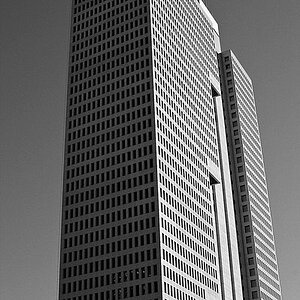


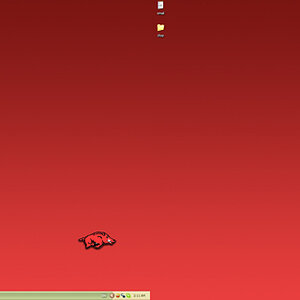
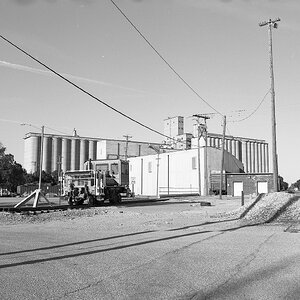
![[No title]](/data/xfmg/thumbnail/37/37929-d9f744e40945eb18b68bb10eb79dbbbc.jpg?1619738401)

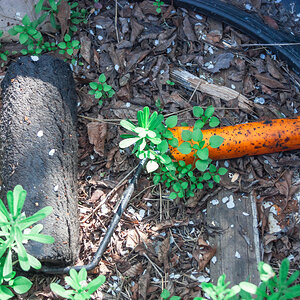
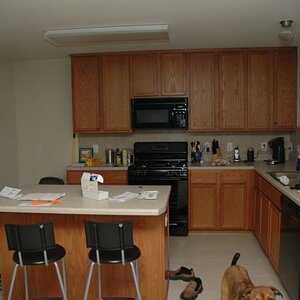

![[No title]](/data/xfmg/thumbnail/32/32929-22e23acc63d6ecb25e5ee941be87121f.jpg?1619735758)
![[No title]](/data/xfmg/thumbnail/35/35224-c14babe4157e05767660f47e7de82aef.jpg?1619736959)